Snails are one of the most ancient types of animals on the planet. There are a lot of fossils dating back to the late Cambrian period that confirms this fact. So, snails lived on Earth even 500 million years ago.
There are many types of snails, but they divide into main groups based on the aquatic or terrestrial habitat. First, live in saltwater and freshwater, terrestrial snails live exclusively on land in humid areas.
All land snails are called gastropod mollusks, they belong to the phylum Mollusca. It includes animals like squids, octopuses, clams, and cuttlefishes among others. Also, they are members of the class that includes all snails and slugs - Gastropoda. Mollusks don't have internal skeletons or bones but snails have another protection which is the shell.
Gastropods adapt to a wide variety of living conditions and they don’t need a lot of food. They evolved to survive in different conditions around them which is really fascinating.

WHAT ARE SNAILS?

How do snails stay alive in winter?
Snails have a small secret - they can live in their shell during cold temperatures covering the entrance with their slime. Only a small number of snails can be active in temperatures that are below freezing point. Usually, first frosts will signalize snails to start hibernation and hide inside their shell. Their bodies are mostly water and they need to stay very humid to be alive. So the risk of transforming into ice crystals is very high and lethal. That is why snails use their multi-purpose mucus to create the door to their shell and close it in winter. Snails create a lid of slime over the shell entrance and it secured their bodies over the cold season. Additionally, they hide in cracks of the walls, under stones, or deep under leaves or soil, where frosts will not reach them so fast. Often they stay in groups while hibernating in favorite places waiting for a chance to emerge when it gets warmer.
-
Snail is a simple name for gastropod mollusks. They can be divided into three groups: land, sea, and freshwater snails.
-
Depending on snails' habitat, they can have lungs or gills. Some sea snails can have lungs and some land snails can have gills.
-
Slugs are very similar to snails but they live without a shell.
-
Snails have a ribbon-like tongue called a radula that consists of thousands of microscopic teeth. The radula works like a file, cutting up the food into tiny pieces.
-
Most of the snails are herbivores and they eat leaves, stems, and flowers. Some larger species and marine snails can be predators or even carnivores.
-
The biggest land snail is a giant African land snail. They can be about 38 cm (15 in) and can weigh 1 kg (2lb).
-
The biggest living sea snail is Syrinx aruanus. Its shell can reach 90 cm (35 in) in length and the snail can weigh up to 18 kg (40lbs)!
-
Usually, garden snails have a top speed of 45 m (50 yards) per hour. That meant that the snail is one of the slowest creatures on Earth.
-
Snails leave behind a trail of mucus while they move. This liquid acts as a lubricant to reduce surface friction. This also empowered the snail to move upside down.
-
Snails can live 5 - 25 years depending on their habitat and species.
-
Snails need a diet full of calcium to keep their shells thick and healthy.
-
Some snails can be venomous. The “cone snails,” a family of sea snails that is very dangerous and some of them are fatal to humans!
-
The usual garden snail is considered to be an agricultural or garden pest as it eats fruits, leaves, and crops.
-
In French cuisine, snails are a delicacy and are called escargot. People eat snails in many other countries of the world, mostly as a fried meal.
-
In English, "a snail's pace" is an expression to describe a slow process, and "snail mail" is now used when referring to sending regular handwritten mail rather than email.

Here is a variety of interesting information about snails. Check it out!

Mating of garden snails occurs in the early spring, after emergence from hibernation. Sometimes the second peak of sexual activity of these mollusks is observed in the beginning of autumn. Numerous observations of snails allowed to describe their behavior in the search for partners and the very process of fertilization itself. So much attention to these mollusks scientists do not give in vain, the fact is that snails are hermaphrodites, that is, one individual is both a man and a woman. Finding a partner for pairing can be immediately determined by the behavior of the snail - it creeps, often stopping and lifting the front part of the body, as looking for someone. If she is lucky, and she meets another snail, then they embark on a "love game" preceding the act of fertilization. The ritual of courtship is very interesting - both snails stretch out, touch the soles and feel each other with mouth blades and tentacles. After such peculiar kisses, snails are stuck into each other in the body with "love arrows" - sharp known formations up to 1 centimeter long, after which spermatophores exchange. In this case, each snail performs the role of both females and males. After fertilization, the snails sprawl in different directions. Under favorable conditions, such "romantic encounters" can occur several times a month. Even after a single fertilization, the snail can store spermatophores for one year.
HOW DO SNAILS MATE
(SNAILS MATING)
Fertilized snail eggs, covered with a protective shell contain a supply of nutrients for the full development of the embryo. The snail digs a hole in the wet ground, lays several dozen eggs measuring 4-7 millimeters and covers them after the end of the laying. For devising of such a nest, the snail takes almost 20 hours of continuous work. Depending on the temperature of the soil, after 3-4 weeks tiny snails appear from the eggs which are small copies of adults.

SNAIL EGGS (SNAIL CAVIAR)

HOW LONG DO SNAILS LIVE?
The lifespan of these mollusks in the natural environment rarely reaches 6-8 years, since they have a lot of natural enemies. As pets land snails can live up to 10 -15 years or more. Do you know what eats snails? Grape snails gladly include in their menu mice, hedgehogs, predatory insects, frogs and toads, lizards, birds, skunks. People don’t refuse to diversify their diet with snails meat. Eating snails is very popular in different European cuisines. For example, a very tasty dish of French cuisine is called "Escargot".
People have paid attention and tasted garden snails for a long time. In ancient Greece land snails were quite common, and even the poorest and most ordinary people could eat them. For Roman legionnaires in their long march snails were kind of natural canned food and affordable healthy food. Monks in the Middle Ages bred these mollusks on vegetable beds to replenish and diversify the meager diet during fasting. Snails have got even to Africa and to the Antilles islands with people; the European colonizers brought with themselves favorite delicacies. Meat snails are not so beloved by many peoples. It contains 70% protein (which is one third more than in chicken eggs), 20% amino acids and 10% fat. Also there are trace elements and vitamins in the snail meat in such quantities that in many countries the pharmaceutical industry uses it as raw material for the production of medicines. Another advantage of this meat is that it does not contain cholesterol, so a snail diet with snail's meat is recommended for patients with obesity, liver diseases and atherosclerosis. The ancient Greeks knew about that for a long time, and modern studies have confirmed that the meat of snails as a powerful aphrodisiac, and the enzyme responsible for this can simultaneously enhance both the female libido and the male potency. Special success in the preparation of dishes from snail's meat was achieved by famous gourmets - the French. A lot of dishes from snails can be found in the menu of French restaurants called escargot. Snails with garlic sauce, snails Burgundy, and snail oil - these and many other recipes using snail's meat have become classics of French cuisine. Especially recommended to use the snail's meat for all violations of the balance of calcium in the body - pregnant women, nursing mothers, patients with diseases of bone and cartilage tissue.

SNAIL EATING

WHAT IS ESCARGOT?
Escargot (plural - escargots and pronounced "es-kar-goh") is a dish made with cooked land snails, typically served as an appetizer in French cuisine. The snails are typically prepared by removing them from their shells, cleaning them, and then cooking them in a butter and garlic sauce. They are usually served in shells or in small individual dishes, often accompanied by bread for dipping into the sauce. Escargot has been a traditional dish in France since ancient Roman times, and it is still considered a delicacy in many parts of the world today.
The history of escargot can be traced back to ancient times. The ancient Romans are believed to have been the first to eat snails, and they raised them in captivity for food. The snails were considered a delicacy and were consumed with a variety of sauces. The practice of eating snails continued throughout the Middle Ages in Europe, and it was during this time that the dish that we now know as escargot began to take shape. In the 16th century, French cuisine began to incorporate snails into dishes, and by the 19th century, escargot had become a popular appetizer in France. The word "Escargot" is also applied sometimes to the living snails of those species which are commonly eaten in this way. Escargot, meaning "edible snail", seems to date from 1892 and derives from the word escaragol (Provençal) and thence escargol (Old French).
Today, escargot remains a popular dish in French cuisine, as well as in other parts of the world. The snails used for escargot are typically raised in captivity and are carefully fed to ensure their meat is safe for human consumption. But not all species of land snails are edible, and many of them are very small to make it worth preparing and cooking. Even among the edible species, the palatability of the flesh varies from species to species. In Europe (France), the species Helix Pomatia (brown garden snail) is most popular and often eaten. The "petit-gris" Cornu aspersa is also eaten, as the Helix lucorum. Several additional species, such as Elona quimperiana, are popular in Europe. Apple snails (Pila Polita) are also consumed in Asia and can be found in Asian markets in North America. If you would like to try snail eating, you need to buy live land large snails Helix Pomatia (or any other species of snails).
While escargot may be seen as a delicacy by some. It is often served with a glass of white wine or champagne and is considered a luxury item in many places. While some people may be hesitant to try escargot, it has a unique and flavorful taste that is worth experiencing at least once.
And now let’s talk about where to find snails or where to buy snails. Snails can be found in forests, fields, and vineyards, where they grow themselves. There are many places where you can find snails via the Internet. The most popular websites are Ebay.com, Amazon.com, Petsmart.com, etc. Moreover. Also, some snail species you can buy here, on our website: Giant African land snail, Exotic Caracolus snail, Cornu Aspersum (AKA Helix Aspersa), Helix Pomatia (AKA Roman Snail), Helix Lucorum, Cepaea Nemoralis (AKA Grove Snail), Theba Pisana, Milk Snail (AKA Otala Lactea), and Cepaea Vindobonensis land snails.

WHERE TO FIND SNAILS AND WHERE TO BUY SNAILS?

Why snails bubble and what does it mean?
Snails can be associated with 2 things: slow speed and slime. They produce slimy secretions that prevent their bodies from drying and helps them to move without injuries. They may be slow but their reactions are pretty fast since they need to survive. Snails quickly produce foamy and bubbly secretion to save them from threats.
Protection from Enemies
It is obvious that snail will not be able to run away from the enemy. When a snail sees a big predator, it hides into its shell to survive. But if it's a smaller predator, the snail can use plan B. For example, when ants try to bite the snail and crawl inside the shell snail just created a bubbly mess not to let them in.
Avoiding Harmful Substances
Snails can smell food from several feet of distance, they have good smell and taste senses. So, if a snail detects something unpleasant, it will be quick to react. Even if you offer lettuce covered with acid, snails will not eat it. It will start producing foam to protect itself from unpleasant substances.
Dehydration Threat
The most common threat for a snail is dehydration. Slime prevents the snail from it but bubbling can also be used for this purpose. The most dramatic case is when people sprinkle salt on snails to destroy them. Salt will suck out water from snail and it starts bubbling. Bubbles have air inside and protect from salt for a while but if there is too much salt - snail will dry out.
Getting to the New Level
Land snails use bubbling only for protection, while sea snails became more creative. Some ocean snails create slime bubbles to form rafts and get closer to the surface. Their snails are able to access their favorite food - jellyfish!
What do snail eggs look like?
Each snail species has different types of eggs but freshwater snails are very similar and easy to identify. They will be clutched together in a transparent sac and look like jelly bubbles that are colored depending on the snail's type.
If the egg is fertilized it usually changes color and small dark spots can be visible over a short period of time. This indicates that yolks are developing. Unfertilized eggs don't change color and start to smell like rotten eggs after some time.
How do snails reproduce?
This differs on species but most snails are hermaphrodites. Some are asexual and can reproduce by themselves. Some mate and play "love darts. Some snail species may lay eggs a couple of times every month. Once a snail shoots the dart it transfers sperm-boosting secretions and fertilizes eggs. Usually, the healthiest snail will win in this game.
Where do snails lay their eggs?
Snails eggs enter the aquarium system with plants. They put eggs on leaves and they may be difficult to spot because eggs are on the backside of the leaf. When you put a new plant to your terrarium, you may put future snails as well. Eggs also can be found on decorations, rocks, and driftwood. Always examine and quarantine all the items you put into your aquarium.
What to do with your baby snails and snail eggs
If you find snails eggs or baby snails that have already hatched - you may think about what to do with them all. There are a few options that can help you to deal with snails in your aquarium.
1. Let them hatch
Snails can be considered unwanted organisms in your aquarium. On the other side, they can become a part of the aquarium’s cleanup crew. Snails are a healthy part of your system as long as their population is normal. If you have problems with algae or other detritus, snails can be a free method to clean up. However, when the algae are gone, the snails will need to be fed to keep them from starving.
2. Use for feeding
Some people grow large populations of snails to feed their fish, like puffers that need to keep their beaks trimmed. It is not difficult to raise snails in a separate breeder. It requires a 5 to 10 gallon (18.9 L to 37.9 L) tank and proper water conditions as well as food. You can select foods that will raise the healthy population of snails and affect the ratio of your fish as well.
3. Humanely dispose of them
If you do not want a freshwater snail riot in your own tank and your fish don't eat them, there is only one option left. There is a lot of controversy about the ways of humanely disposing of the snail, but removing them and placing them in a freezer tends to be the best method.
To detect if most of the snails are out from your tank just place a vegetable, like lettuce, in your tank. The snails will smell the food through the water and gather on the food.
However, if you want to prevent the snails from entering your aquarium in the first place, freezing won't help. Hobbyists have different methods for dipping live plants. You can make bleach mixes, salt mixes, hydrogen peroxide mixes, or use other pre-made aquarium products.
Conclusion
It is easy to identify snail eggs, the only problem is catching them before they hatch and potentially take over your whole aquarium! Remember that snails can be a natural element of freshwater systems and help clean up your ecosystem. If you don’t want additional snails in your tank, then you can always feed your other livestock or humanely dispose them.

Aquarium Snail Eggs

SNAIL'S HOUSE
Don't place a terrarium under the direct sunlight! This is a common mistake! Snails do not enjoy basking in the sun like reptiles do. While different snail species have different levels of tolerance towards dryness and sunlight, excessive exposure to sunlight (which to certain species equals to a mere couple of hours) will result in dehydration and death.

SNAIL'S HOUSE
Don't place a terrarium under the direct sunlight! This is a common mistake! Snails do not enjoy basking in the sun like reptiles do. While different snail species have different levels of tolerance towards dryness and sunlight, excessive exposure to sunlight (which to certain species equals to a mere couple of hours) will result in dehydration and death.
The terrarium substrate. The substrate should be about 2 inches or 5 cm deep. It should be a layer of all-purpose, peat-free potting soil that you can buy in any gardening centre. Hint: check the bag for the pH measurement (which is usually written in small print on the back): what you want to buy is a soil with pH above 7. Soil with a lower pH is an acid and this on the long run may damage your snail’s delicate shell. If you decide to use soil from your own garden, be ready to bring also all the tiny critters inhabiting it into your tank. For this reason, some people recommend “sterilizing” the soil by putting it in the hot oven or in the fridge for some time before pouring it in the tank.

SUBSTRATE
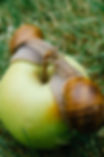
WHAT DO SNAILS EAT (FOOD FOR SNAIL)
Snails found in forest will happily feed on vegetables and fruit (no citrus, though!). Also, leave a piece of cuttlefish bone in the terrarium (they are commonly in commerce as calcium supplies for birds): your snail will appreciate it!They like to eat cucumbers, lettuce, apples, carrots (they prefer the greens), bananas, broccoli, beans, potatoes, porridge, strawberries, corn and of course chalk, which is always available in an extra bowl. I'm sure they like even more various vegetables and fruits. I haven't had the chance to try others yet. What they don't need is an extra bowl of water - in the contrary: Whenever they are faced with a lot of water, they seem to panic and crawl for the highest ground available. Also, if a dish is very light, adult snails easily throw it over, flooding their home. Water is continuously condensing on the walls, so they drink it there when it is required, but since there is also plenty of water in their food, it isn't really necessary to use the soil by putting it in the hot oven or in the fridge for some time before pouring it in the tank.
Snails are usually crepuscular or nocturnal creatures and they will often spend daytime hiding, so you want to provide them with a “home” to which they can retire. A broken terracotta flower pot will provide a comfortable hiding spot for most snails. Some species however prefer hiding among rocks, while others will climb as high as possible and rest under the lid of the terrarium, and others yet will burrow in the soil, so you will have to observe your snail’s behavior to adapt to the terrarium to their specific needs and preferences. Snails are also keen climbers and will appreciate twigs and branches. If you wish, you can use a small plate on which to place food instead of placing it directly on the soil (not recommended if you also keep earthworms and other tank mates that should feed on the leftovers). Do not add a pool or water dish. While some exotic snails (such as Achatina spp.) appreciate it, our local snails do not need it and may actually drown in it. PLANTS It is a good idea to keep some live plants even in the small basic terrarium. Ferns and moss are a good choice for a tank where there is high humidity and low sunlight exposure. Hint: avoid using plants that will need plenty of sunlight or other conditions which are incompatible with your snail in your terrarium.
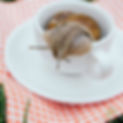
FURNISHING

PLANTS
It is a good idea to keep some live plants even in the small basic terrarium. Ferns and moss are a good choice for a tank where there is a high humidity and low sunlight exposure.
Hint: avoid using plants which will need plenty of sunlight or other conditions which are incompatible with your snail in your terrarium.
Aeration and humidity are important in your tank and the lid you will use will influence both. There are different options you may adopt, which are basically different compromises: the more aeration, in fact, the less humidity in the tank. You will have to find the balance that works for your own tank.
Aeration is provided by holes and openings either on the side of the tank, or, more commonly on the lid. Check the soil – it should be moist but never puddly. Hint: if your tank is too damp, you may need more openings. If it is too dry in spite of spraying water regularly, you may want to try and cover some of the existing holes with plastic wrap.

LID
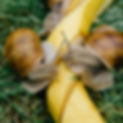
WHAT DO
GARDENS SNAILS EAT?
Garden snails (Helix Pomatia) are herbivorous animals, mostly they eat large leafy greens (plantain, horse sorrel, burdock, dandelion, nettle, cabbage, strawberries, clover, etc., only about 30 different kinds of cultivated and wild plants), as well as soil and fallen fruit (including rotting). These snails are not in vain considered serious pests of agriculture. Having an enviable appetite they eat up young shoots of cultivated plants, causing huge losses. The snails don’t have ordinary teeth in the oral cavity, they have a radula (grater), thanks to which food is scraped, crushed and sent to the esophagus. Due to constant friction, the teeth of the snails quickly become unusable, but for mollusks this is not a problem - new teeth constantly grow in the mouth, which gradually move into the working zone. Similar regeneration of teeth in the oral cavity is a characteristic of sharks, in which teeth are also regularly updated.
In the daytime, snails sit in their shells and with the onset of night and coolness go to feed. These mollusks are especially active after showers. The period of active wakefulness in grape snails is an average of 5 months. All summer they accumulate nutrients in the body, and when the air temperature drops to 18-12 degrees, they leave for wintering, digging in at 5-10 centimeters into the soil. They can be buried to a depth of 30-35 cm in cold areas. Fallen foliage and then snow safely protect the mollusks from frost. Although the snail, having closed in the sink, falls into a stupor, the metabolic processes in its body do not stop, although it is very slow. Cardiac activity drops to one contraction per minute. During winter hibernation the snail loses up to 10% of its weight. In spring, when the earth warms up to 6-8 degrees, the snails wake up, gain air into the lung, dump the lids from the shell and leave their winter shelters. Hungry and active, they go in search of food. After satisfying their hunger, the mollusks begin to search for partners for reproduction.

WHAT DO
SNAILS DO?

SNAIL SHELL
When keeping these mollusks at home in the snail terrarium, you have to make a snail’s house and always keep a mineral additive to the food in a separate feeder - chalk, ground eggshell, or other sources of calcium. Only by eating these minerals, the snail shell will be large, strong, and without damage, and the growth of mollusks is markedly increased, the chips and cracks on the shells heal faster.
Yes. These are the two largest "antennas" on the front of the snail. A picture of the anatomical structure of the snail can be seen here (link). However, it should be noted that snails do not distinguish the colors, as well as the contours of the objects that surround them. With the help of the eyes, snails can distinguish only lights and shadows. Usually, when you touch a snail, it hides its eyes first. It is very interesting to watch how the eyes hide and open. Important! Do not touch the snail's eyes for fun, snails don’t like it. You probably don't want anyone to poke you in the eye. No living thing is pleased with this. Have that in mind!

DO SNAILS HAVE EYES?

DO SNAILS HAVE A NOSE OR CAN THEY SMELL?
Yes. Snails have a nose. These are small horns (antennae) under the eyes on the front of the snail. A picture of the anatomical structure of the snail can be seen here. With these "antennas" the snail can smell. Snails have a very developed sense of smell. You can check this by simply placing the snail on one side of the terrarium and some food on the other. The snail will smell food and quickly crawl to eat something delicious that you have prepared for him.
What is "Escargot Snails"?
Escargot snails, also known as Helix Pomatia or Burgundy snails, are a species of edible land snail that is commonly used in French cuisine to make escargot. These snails are typically raised in captivity and are carefully fed a specific diet to ensure their meat is safe for human consumption. To prepare escargot, the snails are removed from their shells and cooked in a butter and garlic sauce. The meat of the snail is considered a delicacy and has a unique, slightly chewy texture with a mild flavor that is often enhanced by the butter and garlic sauce. It is worth noting that not all snails are suitable for consumption, and it is important to only consume snails that have been raised specifically for human consumption. Eating snails that have been collected from the wild or that are not suitable for consumption can be dangerous, as they may contain harmful toxins or parasites.

WHAT IS “ESCARGOT SNAILS”?


ESCARGOT
IN THE USA
Escargot in the USA
Escargot has been a part of French cuisine for centuries, and it has also been enjoyed in the United States for many years. While it may not be as widely consumed in the US as it is in France, escargot can be found in many French restaurants and specialty food stores throughout the country. In the US, escargot is typically made with imported snails from Europe, as these are considered to be of higher quality than snails that are raised domestically. The preparation and serving of escargot in the US generally follow the traditional French methods, with the snails typically cooked in a butter and garlic sauce and served with bread or another type of pastry for dipping. Escargot has become a popular dish among food enthusiasts in the US, and many chefs have put their own unique spin on the classic recipe. Some restaurants in the US have also begun to experiment with different types of snails, such as those from Asia or Africa, to create new and exciting variations of the dish.
Escargot. What's the best recipe?
There are many different ways to prepare escargot, and the "best" recipe can vary depending on personal taste.
However, a classic and simple recipe for escargot is as follows: Ingredients:
-
24 large escargot snails (canned or fresh)
-
6 tablespoons unsalted butter, softened
-
2 tablespoons minced garlic
-
1 tablespoon chopped fresh parsley
-
Salt and freshly ground black pepper, to taste
-
24 small mushroom caps (optional)
Directions:
1. Preheat the oven to 400°F (200°C).
2. If using fresh escargot, clean and prepare them according to the package directions. If using canned escargot, drain and rinse them thoroughly.
3. In a small bowl, mix together the butter, garlic, and parsley until well combined. Season with salt and pepper to taste.
4. If using mushroom caps, remove the stems and gills and arrange the caps in a baking dish.
5. Place one escargot in each mushroom cap or directly in the baking dish if not using mushroom caps.
6. Top each escargot with a small dollop of the garlic butter mixture.
7. Bake for 10-12 minutes, until the butter is melted and the escargot is heated through.
8. Serve immediately, with bread or another type of pastry for dipping in the garlic butter sauce.
Note: You can also use a traditional escargot plate or baking dish with indentations for each escargot, but this is not necessary.

ESCARGOT. WHAT'S THE BEST RECIPE?
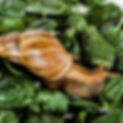
Giant African land snail. General info
Giant African Land Snail. General Info.
The giant African land snail (Achatina Fulica) is a species of snail that is native to East Africa but has been introduced to many other parts of the world, including Asia, the Pacific, the Caribbean, and the United States. These snails are known for their large size, with some individuals growing up to 8 inches (20 cm) in length. While the giant African land snail can be kept as a pet and is sometimes used for food, it is also considered an invasive species in many areas where it has been introduced. These snails can reproduce quickly and have few natural predators, which can lead to population explosions that can damage crops, gardens, and natural habitats. In addition, the giant African land snail can carry a parasitic nematode that can cause a type of meningitis in humans, as well as other diseases. For this reason, the US Department of Agriculture has strict regulations on the import and transport of giant African land snails, and it is illegal to keep them as pets in many states. If you encounter a giant African land snail, it is important to avoid handling it and to report the sighting to your local authorities.
Giant African Land Snail. History.
The giant African land snail (Achatina fulica) has a long and complex history that spans thousands of years. The snail is native to East Africa, where it has been used for food and medicine by indigenous people for centuries. The giant African land snail was first introduced to Asia and the Pacific in the 1800s, likely as a result of trade and migration. It quickly spread throughout these regions, becoming a popular food source and even being used in traditional medicine in some cultures. In the 1900s, the giant African land snail was introduced to the Caribbean and the United States, primarily as a result of the pet trade. It was initially promoted as a popular pet, and many people kept them in their homes as pets or for food. However, the snail quickly became an invasive species, with populations exploding and causing significant damage to crops, gardens, and natural habitats. Today, the giant African land snail is considered a major pest in many parts of the world, and efforts are being made to control and eradicate populations where possible. In some areas, the snail is still kept as a food source or for traditional medicine, but it is also heavily regulated to prevent the spread of diseases and protect native species.

Giant African land snail. History

Is Giant African land snail can be dangerous?
Is giant African land snail can be dangerous?
The giant African land snail (Achatina Fulica) is a species of snail that is native to East Africa but has been introduced to many other parts of the world, including Asia, the Pacific, the Caribbean, and the United States. These snails are known for their large size, with some individuals growing up to 8 inches (20 cm) in length. While the giant African land snail can be kept as a pet and is sometimes used for food, it is also considered an invasive species in many areas where it has been introduced. These snails can reproduce quickly and have few natural predators, which can lead to population explosions that can damage crops, gardens, and natural habitats. In addition, the giant African land snail can carry a parasitic nematode that can cause a type of meningitis in humans, as well as other diseases. For this reason, the US Department of Agriculture has strict regulations on the import and transport of giant African land snails, and it is illegal to keep them as pets in many states. If you encounter a giant African land snail, it is important to avoid handling it and to report the sighting to your local authorities.
Can I keep Giant African Land Snails as pet snails if I live in the US?
No, it is illegal to keep Giant African Land Snails (Achatina fulica) as pets in the United States. These snails are considered invasive species and pose a significant threat to agriculture and natural ecosystems. They have the potential to multiply rapidly and cause extensive damage to crops and native plants if they were to escape or be released into the environment. The U.S. Department of Agriculture (USDA) and the U.S. Fish and Wildlife Service (USFWS) have strict regulations in place to prevent the importation, possession, and breeding of Giant African Land Snails. Violating these regulations can result in severe penalties and fines. If you are interested in keeping snails as pets, there are several other species that are legal and suitable for captivity. Popular pet snail species include garden snails (Cornu aspersum), Roman snails (Helix pomatia), and milk snails (Otala lactea). However, it's always important to check local regulations and ensure you are not acquiring an invasive species or breaking any laws when keeping any type of pet.

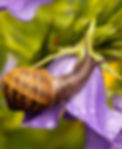
Garden snail
What the "GARDEN SNAIL" is?
The garden snail, also known as the brown garden snail or the European brown snail (scientific name: Cornu aspersum), is a species of snail that is commonly found in gardens and other outdoor environments in many parts of the world, including Europe, North America, and Australia. These snails are relatively small, growing to be about 1-2 inches (2.5-5 cm) in length, and they have a distinctive brown and yellow shell with spiral markings. They are nocturnal and typically come out to feed on plants and vegetation at night. During the day, they often hide under rocks, leaves, or other debris to protect themselves from predators and the hot sun. While garden snails are considered a pest by some gardeners and farmers because they can damage crops and plants, they also play an important role in the ecosystem by helping to break down organic matter and recycling nutrients. In addition, garden snails are sometimes kept as pets or used in culinary dishes in certain cultures, although they should be prepared carefully to avoid any potential health risks. The garden snail is called a garden snail because it is commonly found in gardens and other outdoor environments where it feeds on plants and vegetation. These snails are often attracted to gardens because they provide a source of food and moisture, as well as shelter from predators. Garden snails are also known for their ability to climb, which allows them to access plants and vegetation at different heights. They use a sticky mucus to help them adhere to surfaces and move along vertical and horizontal planes. In addition to gardens, garden snails can also be found in other outdoor environments, such as parks, forests, and fields. They are a common sight in many parts of the world and are often considered a nuisance by gardeners and farmers due to their ability to damage crops and plants.
Some other common snail species that may be found in gardens include:
• Helix aspersa (also known as the common garden snail): This species is similar in appearance to the brown garden snail and is also commonly found in gardens and other outdoor environments.
• Helix pomatia (also known as the Roman snail): This species is larger than the common garden snail and has a distinctive yellow and brown shell. It is found in gardens and other habitats throughout Europe and Asia.
• Cepaea nemoralis (also known as the grove snail): This species has a colorful, striped shell and is commonly found in gardens and other outdoor environments in Europe.
It's worth noting that not all snails found in gardens are harmful to plants and crops. In fact, some species of snails, such as the decollate snail (Rumina decollata), can actually be beneficial because they feed on other snails and slugs, which can be pests in gardens. However, it's important to identify any snail species found in your garden to determine if they are harmful or beneficial, and to take appropriate measures to control their population if necessary.

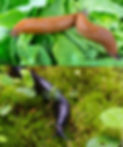
Snail without shell
What the "Snail Without Shell" is?
Snails without shells do exist, but they are relatively rare. Most species of snails have shells, which serve as a protective covering for their bodies and provide support for their internal organs. However, some snails have either reduced shells or no shells at all. These snails are often referred to as "slugs" and are typically found in damp or moist environments, such as gardens, forests, and wetlands.
Slugs are gastropod mollusks, similar to snails, but they lack the external spiral shell that characterizes most snails. Instead, their bodies are soft, slimy, and elongated. Slugs have a muscular foot that they use for locomotion, secreting mucus to aid in their movement. They have sensory tentacles on their heads, which they use to detect their environment and locate food. While snails use their shells for protection and to retain moisture, slugs rely on their slimy mucus to maintain moisture and navigate their surroundings. Slugs are found in a variety of terrestrial and aquatic habitats worldwide. Some species of slugs can be considered pests in gardens and agricultural areas, as they feed on plants and can cause damage. However, slugs also play important roles in ecosystems as decomposers, breaking down organic matter and recycling nutrients.
Some examples of snails without shells include:
• Banana slugs (Ariolimax spp.): These are large, brightly colored slugs found in the western United States and Canada.
• Sea slugs (Nudibranchia): These are marine snails that have lost their shells through evolution. They are found in oceans all over the world.
• Semi-slugs (Veronicellidae): These are terrestrial slugs that have a reduced shell or none at all. They are found in tropical and subtropical regions around the world.
Despite their lack of a protective shell, many species of slugs have developed other adaptations to help them survive and thrive in their environments. For example, some slugs have evolved to be poisonous or have developed special mucus to help them move over rough surfaces.
Here are some interesting facts about slugs:
-
Slime Superpower: Slugs produce a sticky slime that serves multiple purposes. It helps them move smoothly across surfaces, aids in moisture retention, and acts as a defense mechanism against predators. Slime also contains chemicals that help slugs track their own slime trails and navigate back home.
-
Slug Speed: Despite their slow appearance, slugs can actually move at a surprising speed. They can cover up to 55 yards (50 meters) in an hour, which is quite impressive for their size.
-
Mouth Location: Slugs have their mouths located on the underside of their bodies. This unique placement allows them to feed on plants and organic matter while gliding along surfaces.
-
Herbivorous Diet: Most slugs are herbivores, feeding on a wide range of plant material. They can be particularly fond of tender leaves, flowers, fruits, and decaying vegetation. However, some slugs are omnivorous and may also consume fungi or even other slugs.
-
Slimy Love Darts: During courtship, some slug species engage in a fascinating behavior involving "love darts." These are small, sharp, calcareous structures that are stabbed into a partner's body during mating. The purpose of these darts is not fully understood, but it is believed they may transfer chemical cues or affect reproduction success.
-
Hermaphroditic Reproduction: Slugs are hermaphrodites, which means they possess both male and female reproductive organs. When two slugs mate, they exchange sperm, allowing both individuals to lay eggs. This unique reproductive strategy increases the chances of successful reproduction.
-
Regeneration Abilities: Slugs have remarkable regenerative abilities. If a slug loses a part of its body, such as a portion of its tail or even its head, it can often regrow and heal the damaged area.
-
Nocturnal Behavior: Many slug species are primarily active at night, as they are sensitive to sunlight and desiccation. They prefer the cooler, more humid conditions found during the nighttime hours.
-
Incredible Adaptability: Slugs are incredibly adaptable creatures and can thrive in a variety of habitats, from forests to gardens, and even in urban environments. Their ability to adjust to different conditions has allowed them to colonize diverse regions around the world.

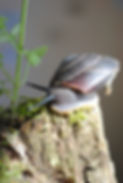
Caracolus Land Snails
The Caracolus Land Snail, scientifically known as Caracolus marginella, is a fascinating and unique gastropod mollusk. Here's something interesting about them:
Caracolus Land Snails are notable for their aesthetically striking and highly variable shells. The shells can exhibit a range of colors and patterns, from shades of brown and yellow to intricate stripes and spots. This diversity in shell appearance has contributed to their popularity among enthusiasts and collectors. These snails are native to the Caribbean islands, particularly in areas with tropical climates. They are adapted to terrestrial life and are often found in leaf litter or on low vegetation. Caracolus Land Snails are known for their slow and deliberate movement, which adds to their charm as pets. Interestingly, some species of Caracolus Land Snails have been studied for their behavior, including their mating rituals and reproductive strategies. Their unique characteristics make them not only aesthetically interesting but also subjects of scientific inquiry.
One interesting aspect of Caracolus Land Snails is their unique reproductive behavior. Caracolus snails are known to engage in elaborate courtship rituals before mating. During these rituals, they often exchange tactile and chemical signals to communicate with each other. Interestingly, some species of Caracolus Land Snails are known to produce love darts as part of their courtship behavior. Love darts are small, sharp structures that the snails shoot into each other's bodies during the courtship process. These darts are believed to carry mucus-containing hormones, affecting the recipient's reproductive system and increasing the chances of successful mating. This unusual behavior is not only intriguing but also adds a layer of complexity to the reproductive strategies of Caracolus Land Snails, showcasing the diversity of behaviors found in these captivating creatures.
Another interesting feature of Caracolus Land Snails is their ability to aestivate. Aestivation is a state of dormancy similar to hibernation, but it occurs in response to high temperatures or dry conditions rather than cold temperatures. Caracolus Land Snails are adapted to tropical environments, and during periods of extreme heat or drought, they retreat into their shells and enter a state of aestivation. This allows them to conserve energy and moisture until more favorable environmental conditions return. This adaptation is crucial for their survival in regions with fluctuating weather patterns, showcasing the resilience and adaptability of these fascinating snails to their natural habitats. It's a remarkable example of how different species have evolved unique strategies to cope with their specific environmental challenges.
In a world that never stops moving, maybe it’s time to slow down… and get SNAILED!
Snails: The Unexpected Zen Masters
Watching a snail glide gracefully across a terrarium is like nature’s version of ASMR. Their smooth, rhythmic movements and peaceful demeanor are the ultimate stress relief. Forget fidget spinners—pet snails are the true mindfulness companions!
Why Snails = Pure Relaxation?
✅ No barking, meowing, or zoomies — just peaceful, silent vibes.
✅ Their slow movement naturally calms your mind and reduces stress.
✅ A mini nature escape in your home—watching them explore is therapeutic!
🌿 Want to embrace the slow life? Start your snail relaxation journey today at MyHappySnails.com and discover the soothing joy of pet snails!

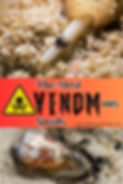
The Most Venomous Snail in the World: The Deadly Cone Snail!
Did you know? This beautiful shell hides a deadly secret! Cone snails (genus Conus) are among the most venomous creatures on Earth—even more potent than some snakes!
-
How It Hunts:
Cone snails fire a harpoon-like tooth to inject venom, paralyzing their prey in seconds!
-
Why It's So Dangerous:
Some species, like the Geography Cone (Conus geographus), produce a neurotoxin strong enough to kill a human within minutes—there’s no known antidote! 😨
-
The Paradox: Deadly Yet Life-Saving
Cone snail venom is inspiring new painkillers that are 1,000 times stronger than morphine—without the addiction risk!


